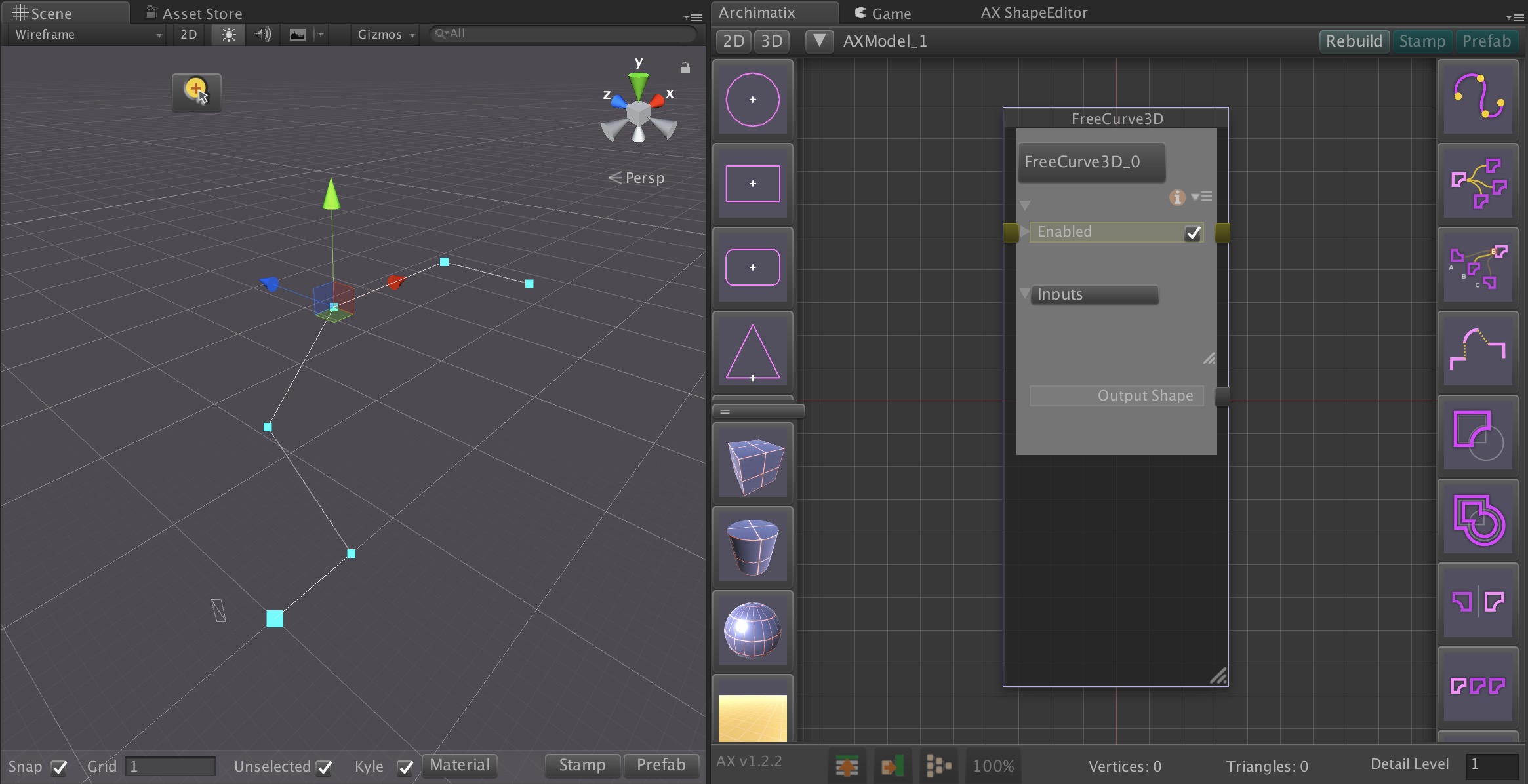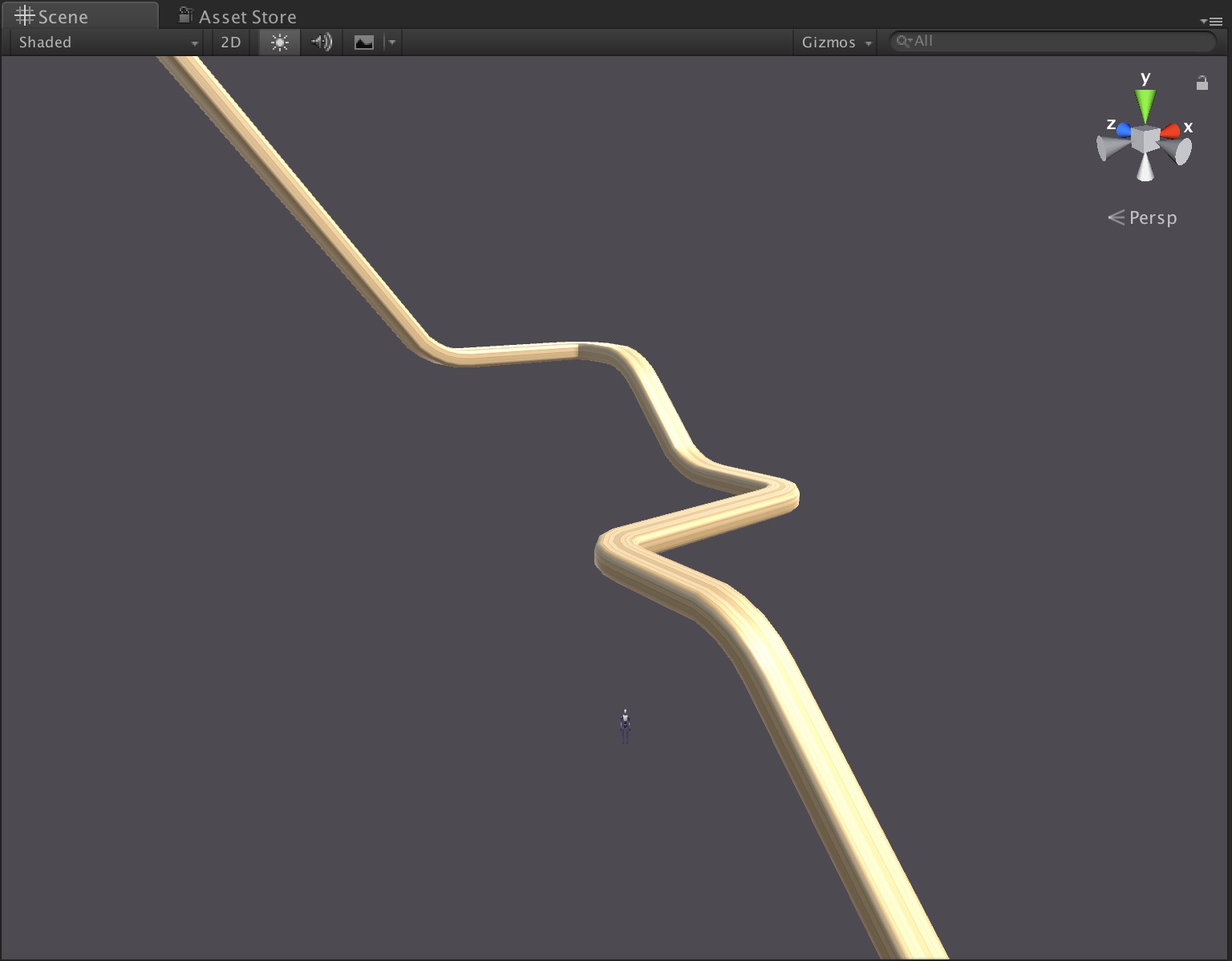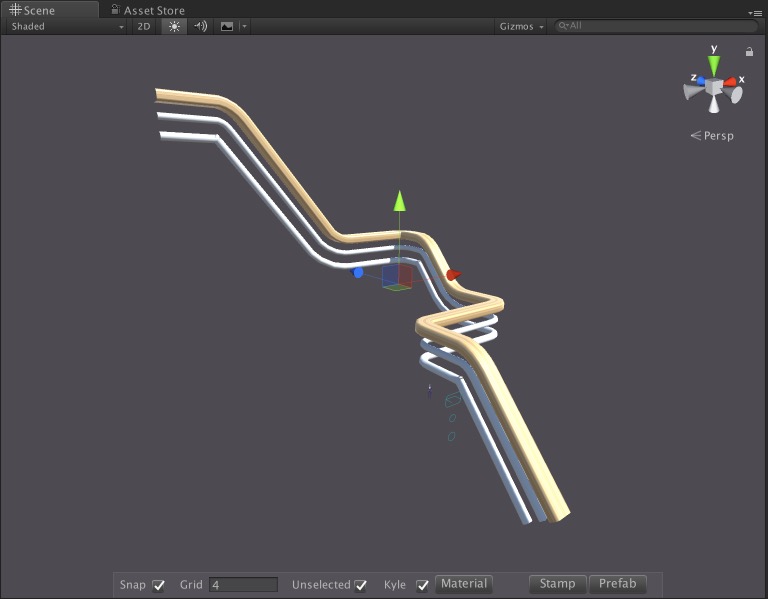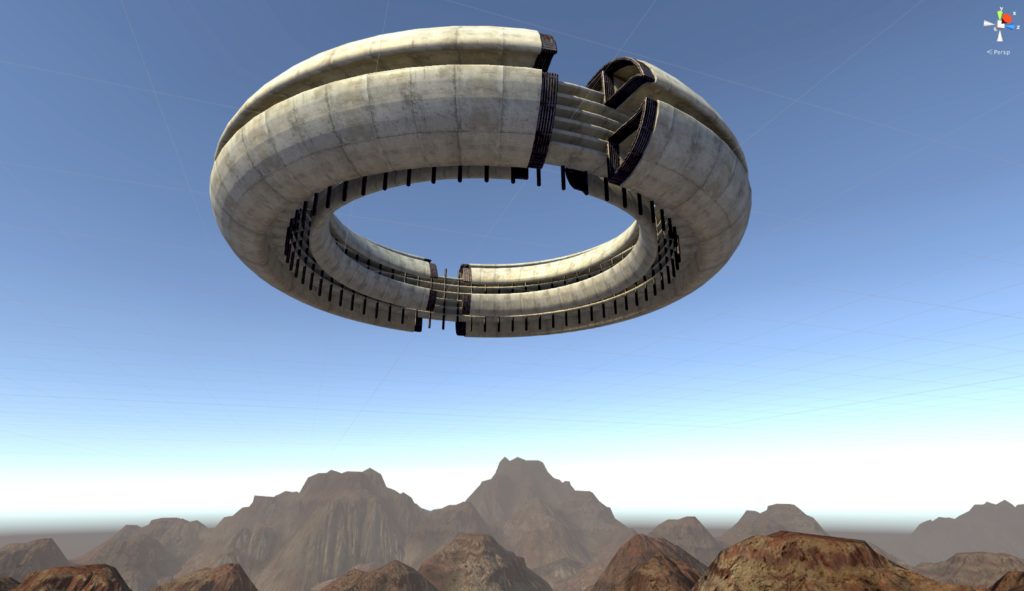To date, the complex 3D forms in Archimatix have been generated by combining two 2D Shapes, such as a Plan Shape and a Section Shape. This is how architects often think about design.
With the introduction of a new datatype, Curve3D, we will be able to create forms that don’t easily fit into architecturally defined plans and sections. Example or Curve3D forms are piping, ramps and complex railings.
I have Curve3D working and editable in a new FreeCruve3D node:

This FreeCurve3D can then be fed into a Curve3DExtrude node:

In this case we see something that looks like a railing. We can add more shapes to the extrude to get this:

There are still some things that need to be worked out before releasing these nodes:
- UV control
- Scaling of the section shape around turns to maintain parallel lines
- Shapes with multiple subshapes, such as the product of a ShapeMerger
- Ability to adjust the Up-vector for the orientation of the edge loops.
- Curve3D points need to be able to link to parameters in the node.
After the Extrude is finished, the work can begin on a Repeater to add items along the curve.
There can be a great variety of Curve3D generators such as serial, loop-the-loop, gabled-roof trim, etc.
Curve3D will also pave the way for platforms that automatically connect with self-adjusting ramps and stairs.


Recent Comments